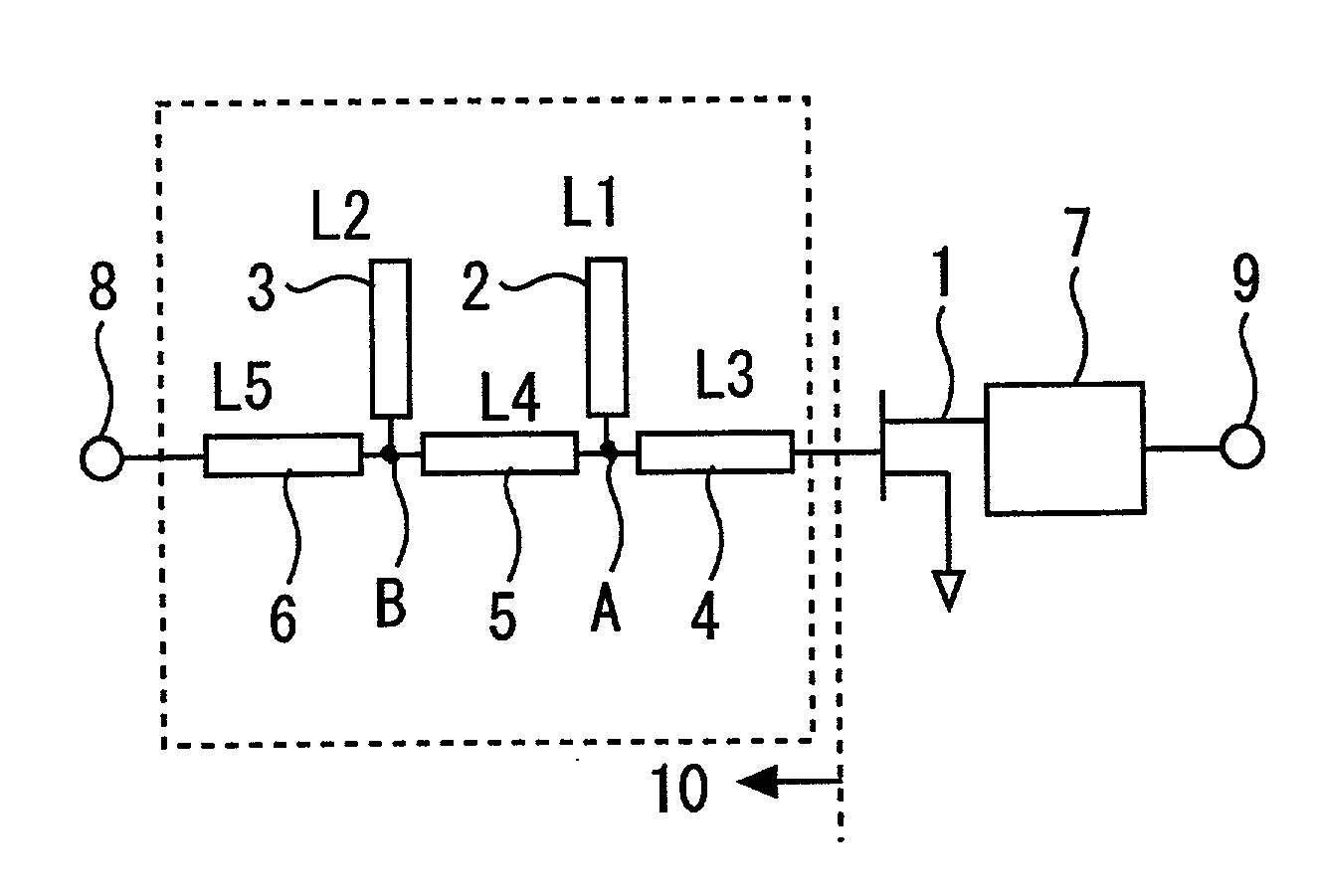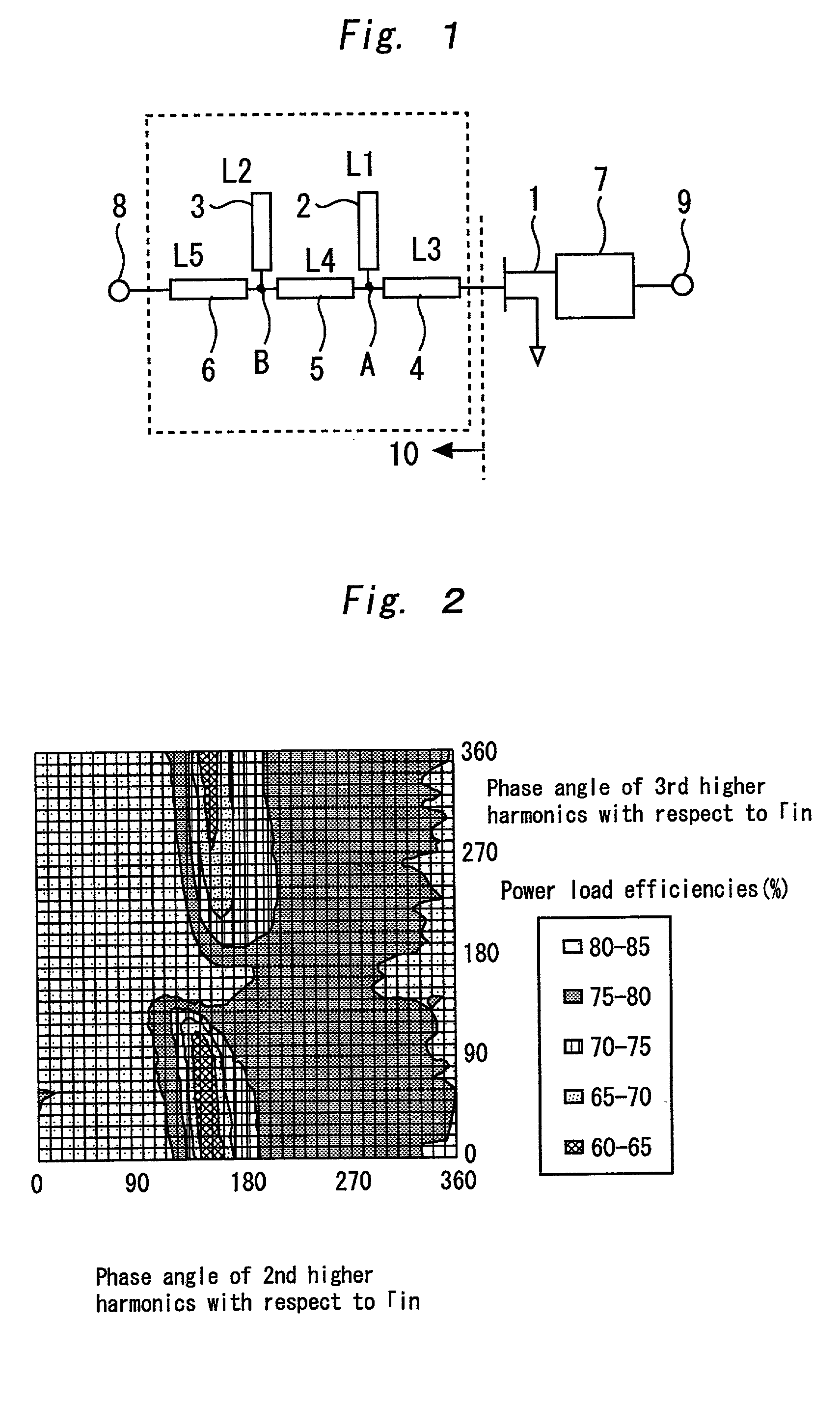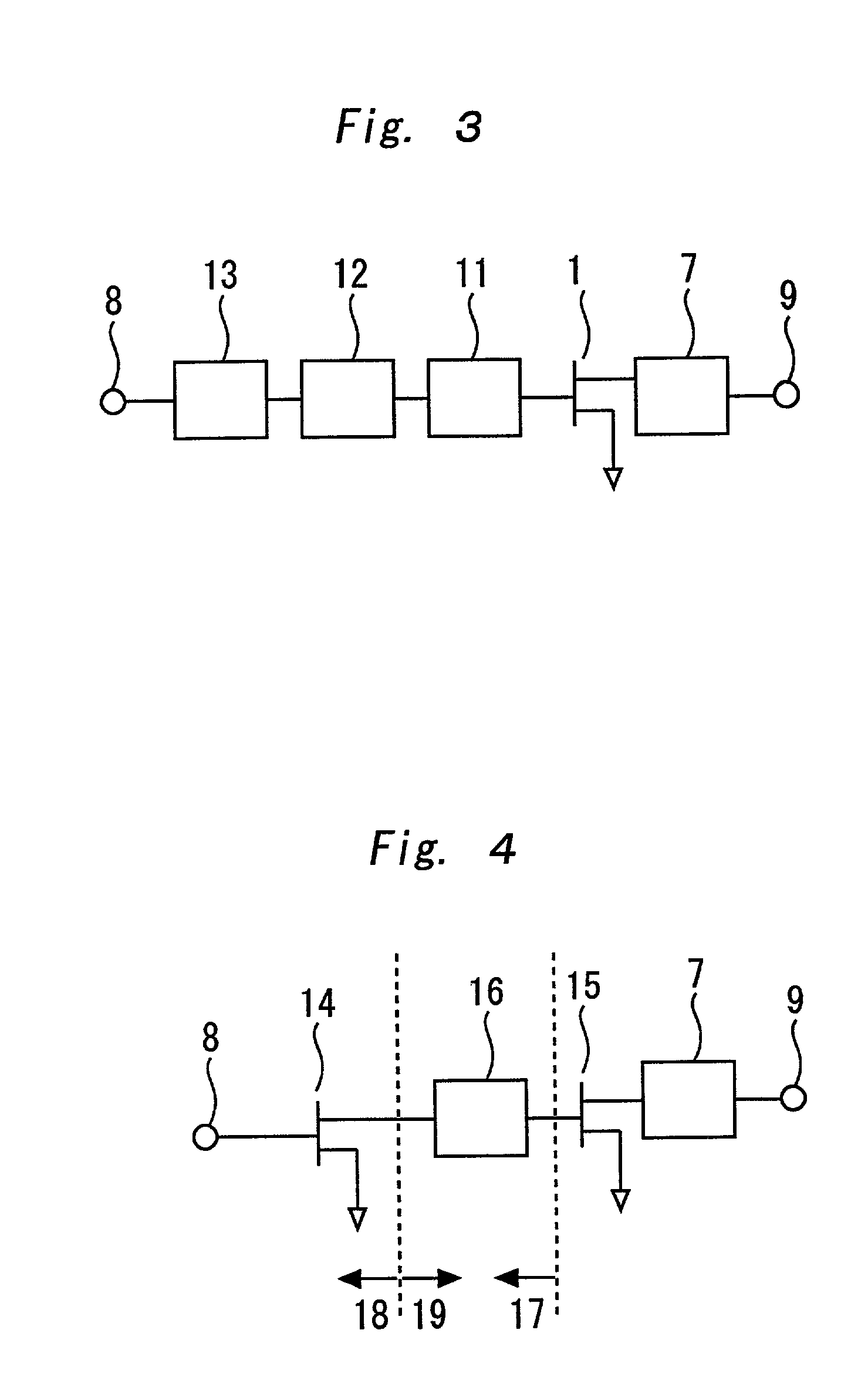High frequency power amplifier
a high-frequency power amplifier and amplifier technology, applied in the direction of amplifiers with semiconductor devices only, amplifiers with coupling networks, amplifiers with semiconductor devices, etc., can solve the problems of limited circuit configuration and inability to obtain sufficient reflection
- Summary
- Abstract
- Description
- Claims
- Application Information
AI Technical Summary
Benefits of technology
Problems solved by technology
Method used
Image
Examples
first embodiment
[0024] FIG. 1 shows a circuit configuration of a high frequency power amplifier in First Embodiment of the present invention. In FIG. 1, reference numeral 1 denotes a transistor, 2 denotes a signal line 1 (line length: L1, line width: W1), 3 denotes a signal line 2 (line length: L2, line width: W2), 4 denotes a signal line 3 (line length: L3, line width: W3), 5 denotes a signal line 4 (line length: L4, line width: W4), 6 denotes a signal line 5 (line length: L5, line width: W5), 7 denotes an output-side matching circuit, 8 denotes a signal input terminal, and 9 denotes a signal output terminal. If impedance is not matched in the middle or ends of signal lines 1 or the like, a part of the incident wave is reflected. The ratio of this reflected wave to the incident wave is called a reflection coefficient. In FIG. 1, reference numeral 10 denotes the reflection coefficient (.GAMMA.in) when the input-side matching circuit is viewed from the direction of the transistor 1. In general, the ...
second embodiment
[0031] FIG. 3 shows a circuit configuration of a high frequency power amplifier in Second Embodiment of the present invention. In FIG. 3, since the same reference numerals as used in FIG. 1 denote the same elements, no description will be made for such elements. In FIG. 3, reference numeral 11 denotes an input-side fundamental wave matching circuit, 12 denotes an input-side 2nd higher harmonic processing circuit, and 13 denotes an input-side 3rd higher harmonic reflecting circuit. As FIG. 3 shows, the input-side fundamental wave matching circuit 11, the input-side 2nd higher harmonic processing circuit 12, and the input-side 3rd higher harmonic reflecting circuit 13 are connected in series. In order to improve the operation efficiency of the transistor 1 using the higher harmonic processing circuit 12, the phase angle of reflection, as well as the quantity of reflection must be increased. In general, there is the problem that the higher the frequency of a signal, that is, the higher...
third embodiment
[0033] FIG. 4 shows a circuit configuration of a high frequency power amplifier in Third Embodiment of the present invention. In FIG. 4, since the same reference numerals as used in FIG. 1 denote the same elements, no description will be made for such elements. In FIG. 4, reference numeral 14 denotes a front stage transistor, 15 denotes a rear stage transistor, 16 denotes an inter-stage matching circuit, 17 denotes an input-side reflection coefficient (.GAMMA.in 1) viewed from the direction of the rear stage transistor 15, 18 denotes an output-side reflection coefficient (.GAMMA.out 2) of the front stage transistor 14 viewed from the direction of the inter-stage matching circuit 16, and 19 denotes the reflection coefficient (.GAMMA. 2) of the front stage transistor 14 viewed from the direction of the inter-stage matching circuit 16.
[0034] As described above, higher harmonic loads are adjusted by reflection using a passive resonance circuit in the prior application. However, in Third...
PUM
 Login to View More
Login to View More Abstract
Description
Claims
Application Information
 Login to View More
Login to View More - R&D
- Intellectual Property
- Life Sciences
- Materials
- Tech Scout
- Unparalleled Data Quality
- Higher Quality Content
- 60% Fewer Hallucinations
Browse by: Latest US Patents, China's latest patents, Technical Efficacy Thesaurus, Application Domain, Technology Topic, Popular Technical Reports.
© 2025 PatSnap. All rights reserved.Legal|Privacy policy|Modern Slavery Act Transparency Statement|Sitemap|About US| Contact US: help@patsnap.com



